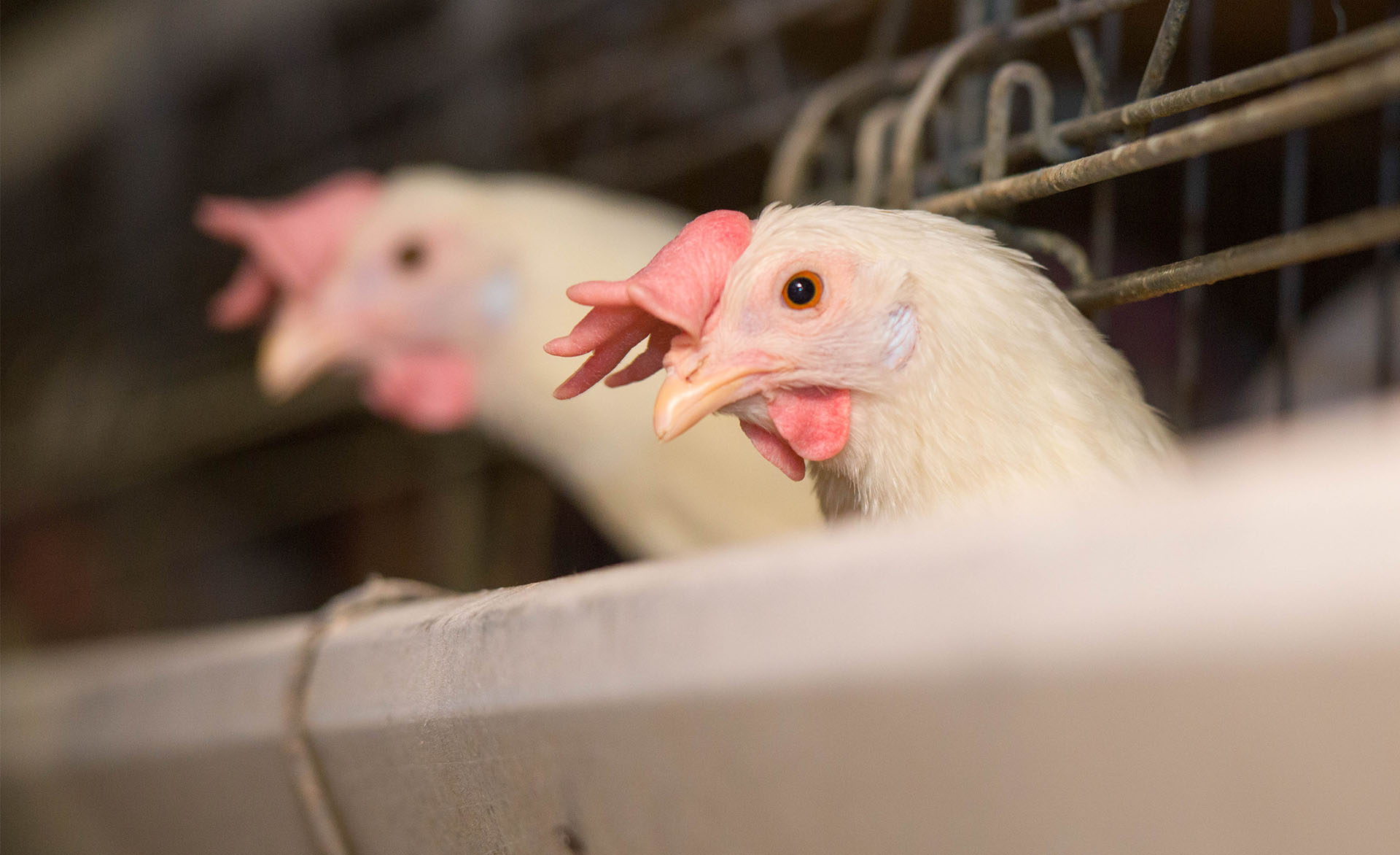
(Photo: Iowa Soybean Association / File Photo)
Is soybean meal losing its dominance in livestock feed?
February 1, 2025 | Kriss Nelson
Swine shift away from soybean meal, broiler chickens maintain consumption
Soybean meal is a major protein source for animals. But, with alternative protein sources available, is soybean meal losing its place in the livestock feed market?
The answer is mixed. Broiler chicken and laying hen diets increasingly rely on soybean meal, while swine diets use less.
“The really positive aspect is that soybean meal consumption by our largest customer, the broiler industry, is increasing,” says Philip Lobo, owner of Lobo Consulting Solutions, LLC. “Better yet, broiler production and domestic consumption of chicken is increasing.”
Poultry is the U.S. soy’s No. 1 domestic customer using 66.2% of the soybean meal consumed by animals. Swine comes in second, consuming 17.5%.
While the swine industry continues to be the second largest consumer of domestic soybean meal, consumption, however, has decreased by 30%.
“While I believe we shouldn’t overlook multiple advantages of soybean meal in supporting pigs’ health and growth, it seems that no one has found the minimum level of soybean meal that can be incorporated to achieve these objectives,” says Lobo. “Until there is some consensus on minimum dietary soybean meal level by stage of life, it appears soybean meal consumption by the global swine sector will continue to decline.”
Between 2017 and 2022, the pork industry reduced its use of domestic soybean meal by over 1.2 million tons (16.5%) despite a 5.5% increase in pork production.
“The swine feed industry is structured in a way they can use mid-proteins, whether it is canola meal, DDGs or another mid-protein supplemented with feed-grade amino acids,” says Lobo. “And the decline is being seen globally.”
According to Lobo, China and the European Union (EU) are both aggressively attempting to reduce the use of U.S. and South American soybean meal.
“For the global swine industry, this is more of a value proposition,” he says. “They can have the lower feed costs and maintain the same feed conversion ratio.”
The shift away from soybean meal in swine feed started in the late 1990s with the introduction of feed-grade lysine.
“This shift began 25 years ago, and it is not going to change overnight,” says Lobo. “Soybean meal does promote better health in pigs, but we don’t know the mode of action. Until a nutritionist and veterinarian can agree upon a mode of action, we are unlikely to see more soybean meal used to support health.”
However, Lobo suggests extra soybean meal in the diet to counteract summer heat stress weight loss in pigs is an opportunity to drive additional consumption. He referred to information provided by Dr. Bart Borg, PhD, vice president of feed and nutrition at Passel Farms in Ames.
“Dr. Borg demonstrated that although a summer diet with more soybean meal is about $5 per head more expensive, the improved sale weight means a producer would make nearly $2 more per head in net margin,” Lobo says.
The United Soybean Board is working diligently to raise swine producers’ awareness of this opportunity. They also continue research to improve soybean meal use in many livestock and poultry feeds.
“There is a giant amount of research going into soybean meal’s ability to enhance health in swine,” says Lobo, “And there is research in broilers, layers, turkeys, dairy cows and even some in beef cattle.”
Will soybean meal remain a key feed ingredient?
Livestock feed continues to account for 97% of domestic demand for U.S. soybean meal.
According to United States Department of Agriculture (USDA), chicken production increased from 41.2 billion pounds in 2017 to 45.7 billion pounds in 2022, an increase of 10.9%.
According to the Soybean Meal Demand Assessment conducted by Decision Innovation Solutions, an economics firm based in Urbandale, soybean meal consumption by the U.S. broiler sector increased from 15 million tons in 2017 to 18.2 million tons in 2022, an increase of 21.5%.
In addition to the ever-increasing broiler consumption, Lobo says the egg industry is also seeing value in soybean meal.
“Soybean meal consumption in the egg industry went up 28% from 2017-2022,” he says. “This is all very positive for the soybean industry.”
Broiler chicken genetics are evolving, leading to a greater need for nutrient-dense diets and it’s clear that U.S. chicken producers’ nutritionists value the nutrient density found in U.S. soybean meal.
The U.S. broiler industry, the largest consumer of U.S. soybean meal, is expanding yearly, driven by increased soybean meal usage and chicken consumption.
“When you look at the domestic consumption of chicken versus pork, while the consumption of chicken is growing, U.S. per capita pork consumption is really, really flat,” says Lobo.
Domestic per capita pork consumption is within .2% of where it was in 2000. In contrast, broiler chicken consumption is over 33% higher from that time.
“Broiler consumption has steadily risen by over a pound per person per year, which is good news for soybean farmers,” says Lobo.
Back